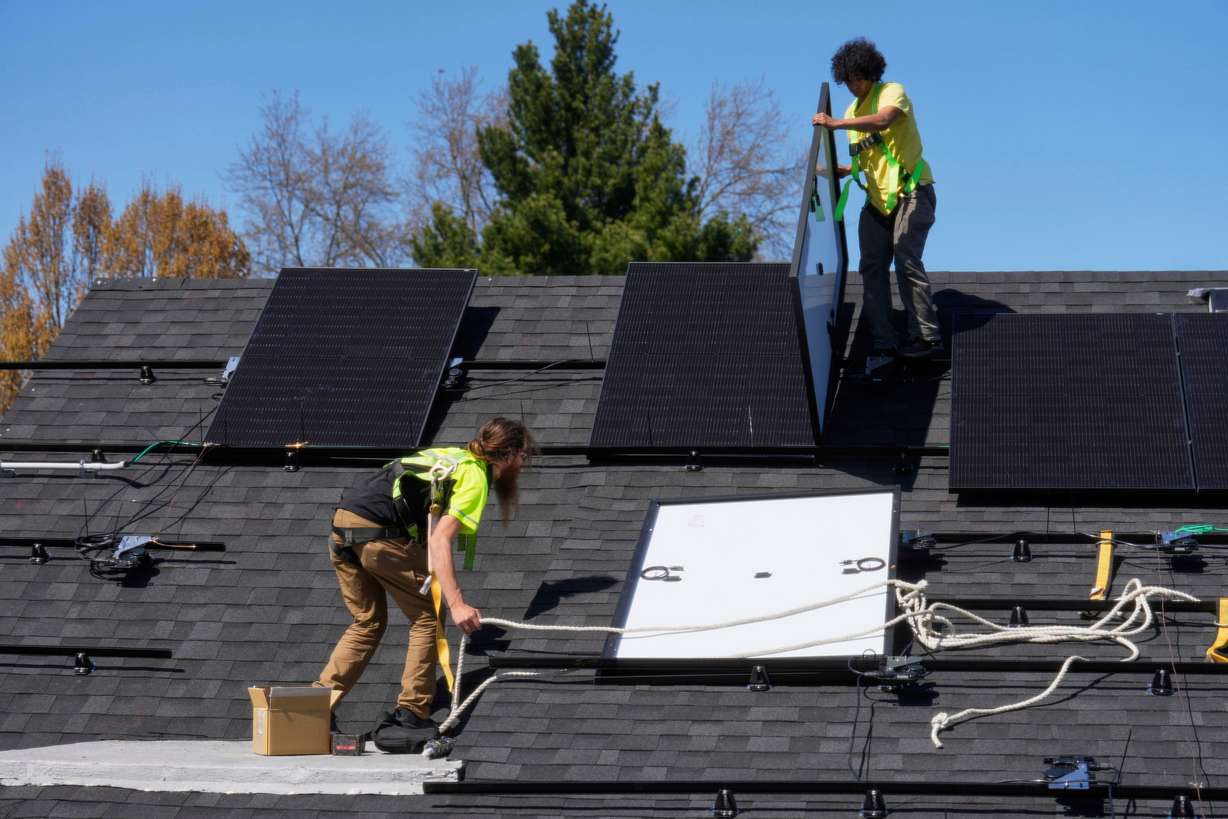- Sen. John Curtis played a key role in preserving green energy tax credits in President Donald Trump's tax bill.
- Curtis added language delaying expiration of tax incentives, giving energy developers time to qualify for exemptions.
- He also helped removed language on proposed taxes on foreign-sourced materials for wind and solar projects.
WASHINGTON — Utah Sen. John Curtis played a crucial role in softening GOP-led proposals to immediately eliminate a slew of clean energy tax credits, positioning himself as a lead negotiator in the Senate's consideration of President Donald Trump's domestic policy agenda.
The megabill passed by the Senate on Tuesday includes language to largely dismantle federal tax incentives for electric cars, wind and solar power usage, and other green energy technologies previously passed by the Biden administration. However, Curtis managed to include language that would delay expiration of those tax credits, arguing they offer critical support for businesses across the country who will need time to adjust.

Shortly before the Senate voted to advance the massive tax bill, Curtis secured a number of last-minute changes to extend deadlines for wind and solar companies to qualify for the existing tax incentives as well as language to omit proposed taxes on businesses that may need to rely on foreign companies for materials.
"The Big Beautiful Bill delivers for Utahns. It secures the border, provides permanent tax relief for working families, and strengthens our military," Curtis said in a statement. "I'm grateful to Leader (John) Thune and Finance Chair (Mike) Crapo for including my changes to the energy credits — key for business certainty and for Utah's energy future."
Curtis touted several policy wins he secured in the bill, including language to extend the time frame for energy developers to qualify for the current maximum tax credit. The updated bill gives companies a 12-month window to begin construction and still be eligible for the full subsidy. If companies begin construction in that window, they'll receive the credit for four years after the start date.
Those projects would then receive 100% of available subsidies but must be placed in service by the end of 2027.
The bill stipulates for projects that begin after that 12-month deadline, they must also be completed and placed into service by the end of 2027 to qualify.
Curtis and other Republicans also included a provision that would protect projects already underway from losing tax credits they already qualified for, avoiding "surprise penalties" and "shifting goalposts."
Additionally, the Utah senator worked with his colleagues to remove a proposed excise tax targeting wind and solar energy projects, particularly those that outsource materials from foreign countries such as China.
Related:
Republicans sought to include strict rules requiring developers to prove they are not relying on materials from China or other "prohibited foreign entities." If companies failed to do so, they would be levied excise taxes beginning in 2027 — a provision Curtis pushed to omit from the final package.
Curtis also secured language lifting any proposed bans on solar leasing, "opening more doors for innovative financing and access to clean energy technologies," Curtis wrote in a press release.

The changes were reflected in the final version passed by the Senate, which was considered by the House on Wednesday. However, some fiscal conservatives in the House are upset with the changes to the green energy tax credits, pushing for those subsidies to be repealed in a much shorter period.
But there remains a strong faction of Republicans in the House and Senate who wished to see those phaseouts eased, of which Curtis is a member.
Republicans hope to pass the latest version of the bill and send it to Trump's desk by Friday. During a marathon overnight session, lawmakers early Thursday cleared a final procedural hurdle needed to begin debate on the bill.
Contributing: Reuters









